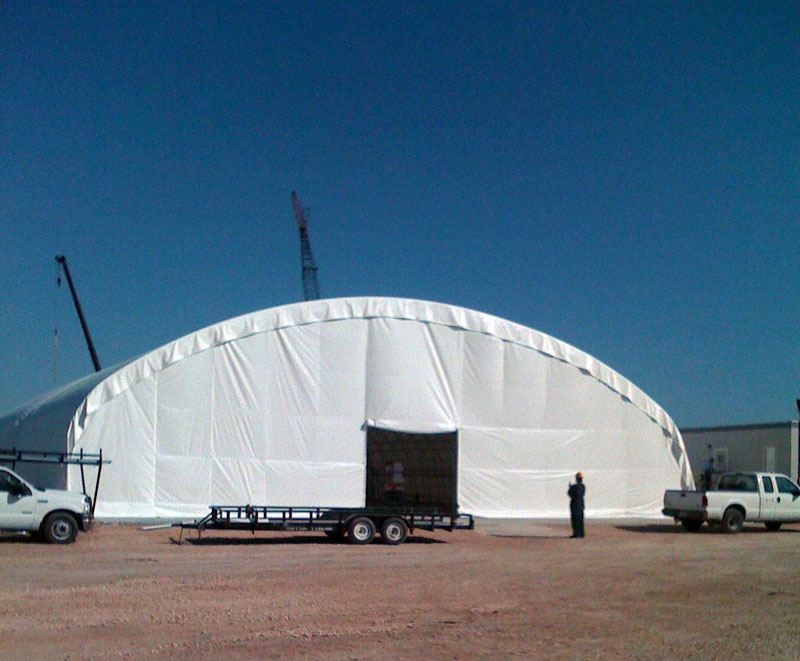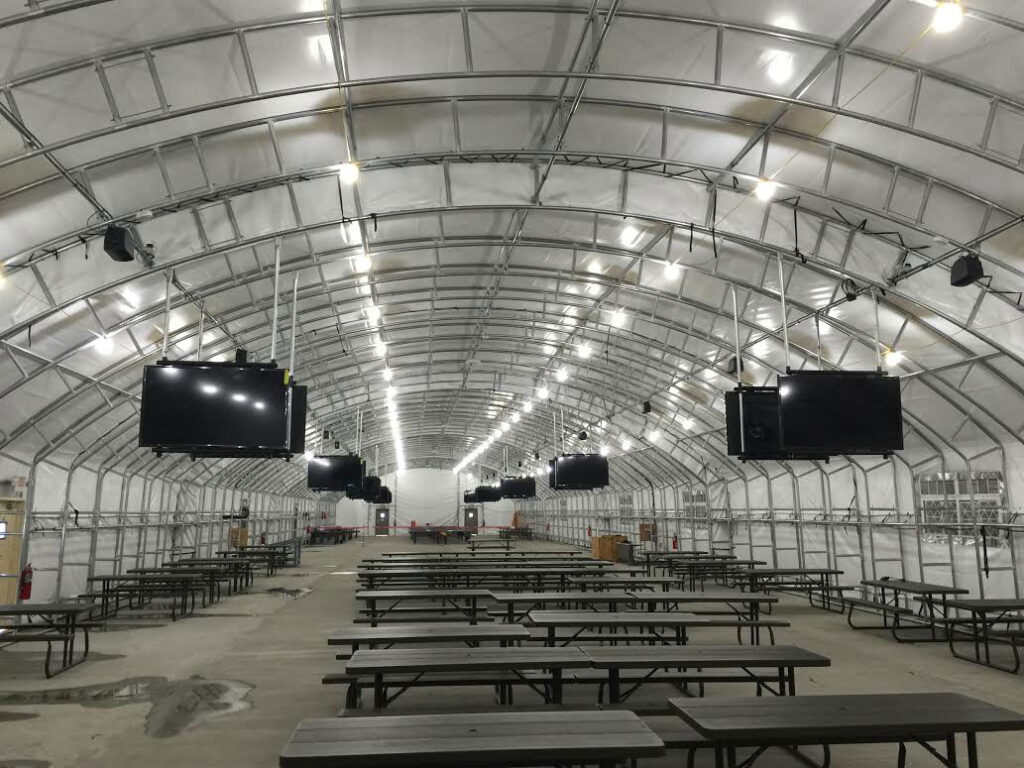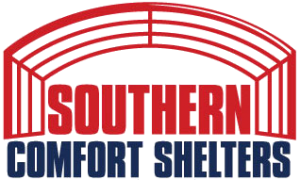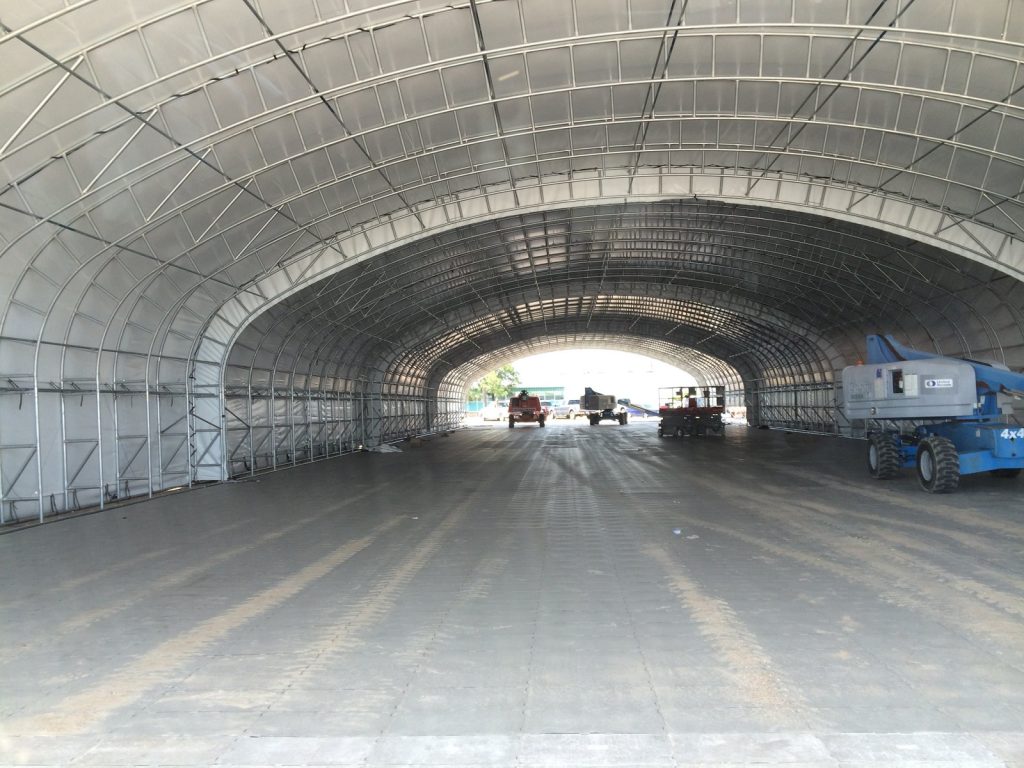Tent Buildings: Portability Meets Durability

Tent Buildings: Portability Meets Durability
What Are Tent Buildings?
Tent buildings, also known as a fabric building or tension membrane structures, are versatile and highly adaptable tent structures designed to meet the demands of various industries. These innovative structures represent a fusion of portability and durability, making them indispensable in applications ranging from temporary storage and shelter to large-scale industrial operations.
Tent buildings are characterized by their unique construction, featuring a clear span design that eliminates the need for interior support columns. Instead, they rely on robust, tensioned fabric membranes supported by a rigid framework. This design not only maximizes interior space but also offers flexibility in layout and usage, making them ideal for a wide range of industrial and commercial needs.
Tent Buildings: Portable and Durable Clear Span Design
Portability of Tent Buildings
Portability is a key characteristic that makes tent buildings a preferred choice across various industries. These fabric buildings are engineered with specific features that facilitate their easy transportation, rapid assembly, and relocation as needed. Here are the core features that enhance the portability of tent buildings:
Lightweight Materials: Tent buildings are constructed using lightweight materials that strike a balance between strength and mobility. The framework is often made from materials like aluminum or galvanized steel, known for their high strength-to-weight ratios. Lightweight materials are not only easier to transport but also reduce the overall weight of the structure, which is especially crucial for industries that require frequent relocation.
Modular Structure: Tent buildings are typically designed with modular components that can be assembled and disassembled quickly. This modular approach simplifies transportation and setup. Sections of these temporary tents can be compactly packed for transport and then easily assembled on-site, reducing the time and labor required for installation.
Ease of Transportation: Tent buildings can be packed into compact containers or transported on flatbed trucks. This makes them highly adaptable for industries like oil and gas, where temporary building is required at remote locations.
Durability of Industrial Tents
Durability is a crucial aspect of tent buildings, ensuring they can withstand the rigors of their intended applications and provide long-lasting value to industries like oil & gas, manufacturing, agriculture, and construction. Several key factors contribute to the durability of these versatile structures:
Quality of Materials: High-quality materials are carefully selected to withstand environmental stressors, including UV radiation, temperature fluctuations, and moisture. Tensioned fabric vinyl membranes are known for their resistance to wear and tear.
Weather Resistance: Durability in tent buildings extends to their ability to endure various weather conditions. They are engineered to resist harsh elements, including heavy rain, snow, wind, and intense sunlight. Weather-resistant coatings and treatments are often applied to fabric membranes to prevent degradation and maintain structural integrity over time.
Fire Retardant: Fire-retardant material further solidifies the durability of tent buildings, particularly in industries where fire hazards are a concern. This additional layer of protection not only safeguards assets and personnel but also underscores the adaptability and resilience of these structures across diverse industries.
Clear Span Design
One of the defining features of tent buildings is their clear span fabric structure design, which fundamentally sets them apart from traditional structures. The clear span design eliminates the need for interior support columns or pillars, allowing for unobstructed, open interiors. This is achieved through the use of tensioned fabric supported by a sturdy aluminum framework. The fabric membrane is stretched tightly over the frame, creating a continuous roof and sidewall surface. This design not only maximizes the usable space within the structure but also offers incredible flexibility in how the interior space can be configured. Whether it's creating large, open workspaces or accommodating specific equipment layouts, the absence of support columns allows for versatile customization to suit the unique needs of each industry.

Industry-Specific Applications for Tent Buildings
Oil & Gas Industry: Tent buildings have become indispensable in the Oil & Gas industry, where their versatility addresses a range of critical needs. These structures serve as more than just a shelter; they are a lifeline for remote worksites. In the heart of these operations, lunch tents provide a welcoming refuge for workers, offering a comfortable place to recharge and refuel during demanding shifts. They also provide equipment storage solutions, safeguarding valuable machinery and tools from the elements. Their temporary structure design is particularly advantageous in the ever-changing landscape of oil and gas refinery operations, enabling quick deployment and relocation. Tent buildings can be specially designed with blast-resistant panels, ensuring the well-being of personnel and the protection of assets in the face of potential hazards.
Construction Industry: Tent buildings have revolutionized construction sites by offering versatile solutions for temporary infrastructure needs. These structures serve as on-site offices, storage facilities, and shelters for personnel and equipment, enhancing productivity and organization during complex construction projects. What makes tent buildings particularly valuable in this context is their mobility. Once a construction project is completed, these structures can be swiftly disassembled and moved to the next job site, reducing the logistical challenges and costs associated with traditional permanent structures.
Manufacturing Industry: Tent Buildings are employed for many purposes, including storage buildings or temporary warehouses, production expansion, and process-specific enclosures. The clear span design of tent buildings ensures efficient use of available space, accommodating machinery, assembly lines, and storage without the hindrance of interior support columns. This flexibility proves critical in an industry where production requirements can evolve rapidly. Furthermore, the portability of tent buildings facilitates swift adjustments to manufacturing layouts or relocations to optimize production efficiency.
Agriculture Industry: In agriculture, tent buildings have revolutionized the way farmers and growers operate, offering innovative solutions to address various challenges in crop and livestock management. These versatile structures are used for a multitude of purposes, including crop storage, grain storage, hay storage, livestock housing, and farm equipment shelters. The clear span design allows for efficient storage of crops and machinery, maximizing available space and protecting valuable assets from the elements.
Southern Comfort Shelters: Fabric Tent Buildings Manufactured In the U.S.
Are you ready to elevate your business with innovative, customizable clear span tent buildings? Look no further than Southern Comfort Shelter! With our in-house manufacturing facility located in Zachary Louisiana, we empower you to tailor your tent structure precisely to your industry and operational requirements. Don't settle for one-size-fits-all fabric covered buildings. Contact us today to explore the endless possibilities and discover how Southern Comfort Shelter can transform your operations.








